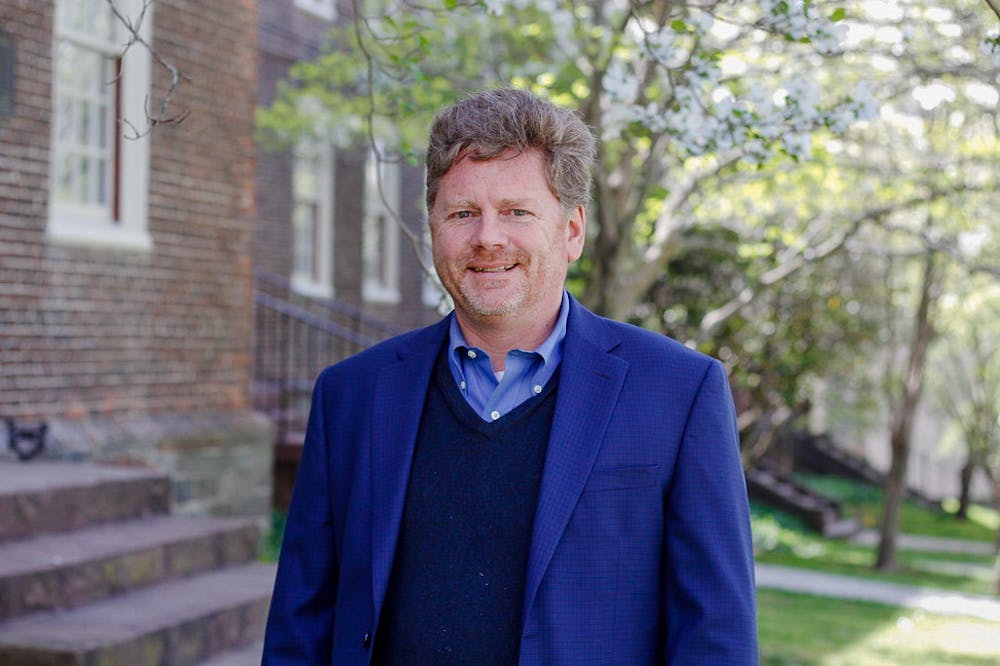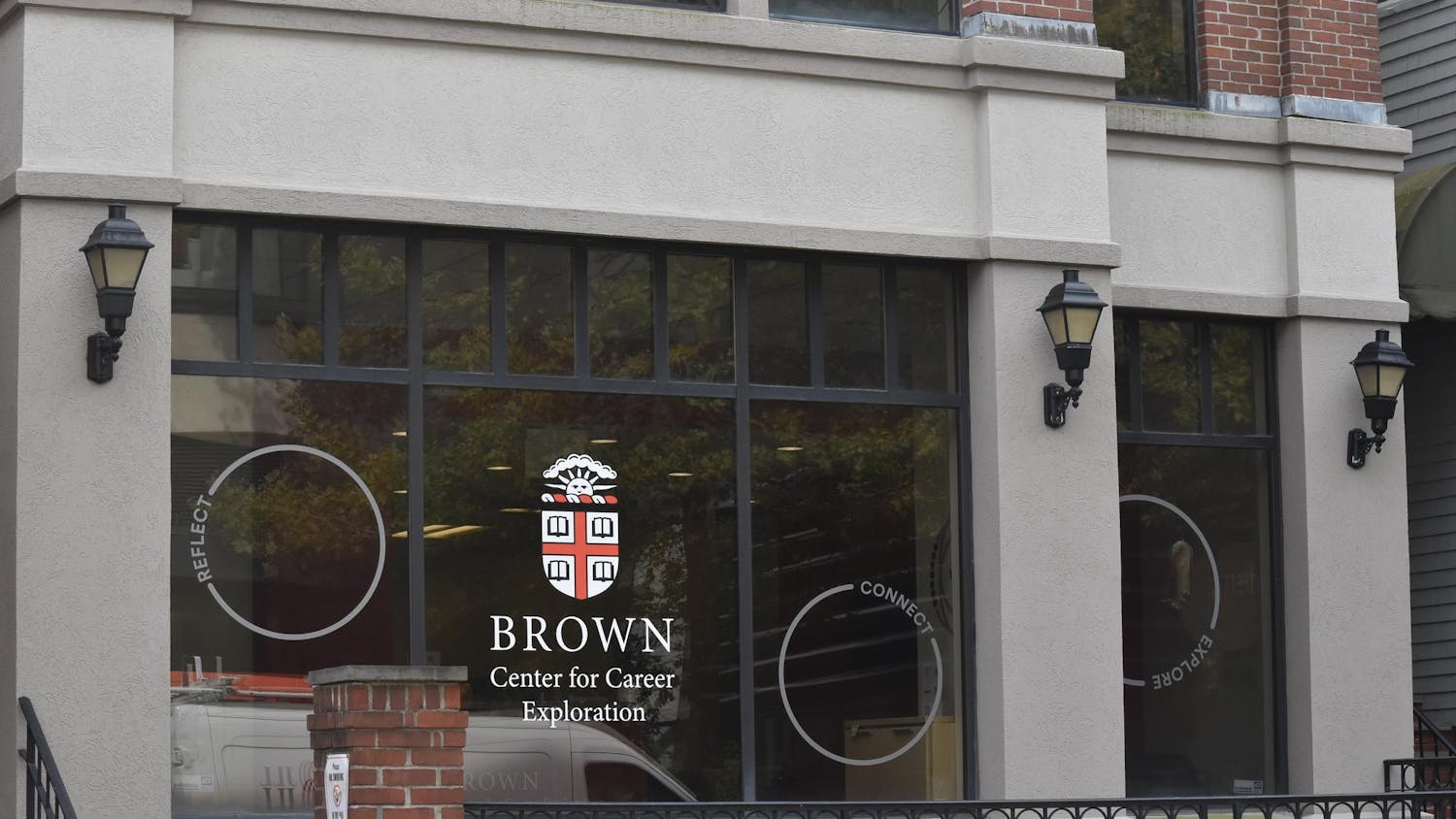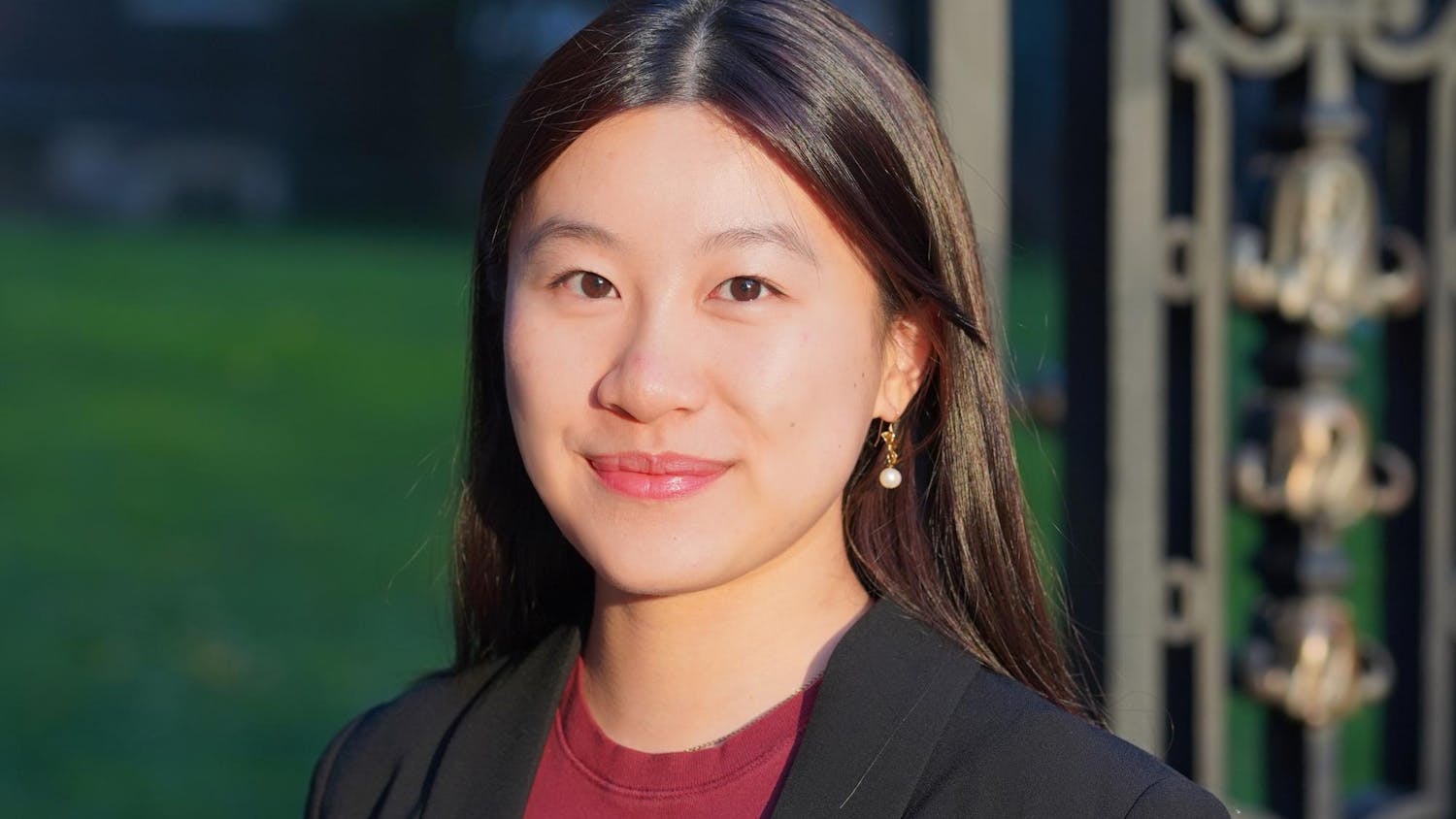Since early in the COVID-19 pandemic, as public health guidelines and University policies have shifted in response to the spread of an ever-changing virus, Brown community members have turned to University-wide communications as a critical resource. News traveled as students opened their inboxes to unexpected changes, ranging from the abrupt end to in-person classes in spring 2020 to the lifting of masking and testing requirements this semester. At other times, information has been anticipated, as with weekly campus safety updates. One of the central figures involved in these communications has been Executive Vice President for Planning and Policy Russell Carey ’91 MA’06. Carey has worked at Brown since the 1990s, assuming roles such as co-chair of the Land Acknowledgement Working Group and overseeing Brown’s development plans. The Herald spoke with Carey about his role during the pandemic as an administrator with a hand in related communications.
Haley Sandlow: How did your responsibilities change with the pandemic?
Russell Carey: Over the course of the spring semester, from February 2020 up until early March, it was increasing in intensity. To back up a little bit, in the year 2010 or so, we had had prior experience with a flu called H1N1 that was not nearly as serious in terms of worldwide impact. … Having had the experience, in the beginning, I and others felt like it was somewhat similar to that.
So in February, every week, it felt like it was getting more impactful, and then when things started to shut down, it was certainly getting people's attention. If you went back and looked at when the communications started, we did some communications early on, but they were pretty modest and the Core Crisis Team was managing it effectively. But by early March, things started to change really dramatically. Particularly, we were hearing from faculty and others who had colleagues, particularly in Italy, as we were spending a lot of time focused on students studying abroad and whether programs would be shutting down and whether they should be called back, and communications about changing protocols for events. Then within a week or week and a half, we were shutting down.
Then it started to be more … of a regular structure and maybe more project-based. For example, I was a member of the President's Task Force to focus on planning for (fall 2020). When we had emptied out almost all the residence halls, we provided housing for … first responders — people working in hospitals, medicine and other emergencies — so that these folks who were needed could keep doing their jobs but didn’t have to go home. And then I’d say the major thing that I took on with others was I led the process to implement (COVID-19 testing).
Sandlow: Have you led the communications, or have you worked with other members of the community and administration in those days?
Carey: Everything was a very broad-based team effort. It's probably not always readily apparent how many people are doing a lot of different things all the time — … Health Services, … (Emergency Medical Services) and medical staff. But that basically carries across every department at Brown, right? Some of the ones that are more obvious are Health Services or Dining or Residential Life, but there's a whole team of people that became very adept at procuring masks and tests and the logistics behind the testing process and the space and facilities and ventilation. …
To touch briefly on information technology — the support of both the initial crash, shift, transition to Zoom, helping faculty do hybrid or fully online … there was a tremendous amount of help from behind the scenes to make that happen. …
But there's a lot of people who are involved in shaping and reviewing communications. It varies based on how momentous the communications are. The campus safety updates are pretty straightforward, but certainly about a year ago, when we were first announcing that vaccinations would be required, that was a different type of communication. So, I might have initially drafted it, but lots of people would be involved in reviewing it.
Anna Kim: So administratively, what does the communication process look like from the decision-making to sending out the email? Who ultimately has the eyes on all the emails that were sent out to the Brown community?
Carey: So probably the key department is the Office of University Communications, so Brian Clark ... and our Senior Vice President (for Communications Cass Cliatt), who certainly oversee communications generally. The communications around COVID are so widespread, and it's changed over time. I think in the early part of the pandemic, but maybe even up until sort of the middle of this semester, … lots of people (were) involved. … Now, that can vary to a certain extent, particularly these campus safety updates… For the most part, that's me and Brian doing those emails, (but) oftentimes I'll be … asking other people like (Vice President for Campus Life) Eric Estes, or (Associate Vice President for Campus Life and Executive Director of Health and Wellness) Vanessa Britto, or just different colleagues, to look at that (communication) in terms of the tone and the content and the messaging.
And so, the short answer is, although there is a process, it can vary a little bit depending on how routine or not routine that messaging is. But, just to give maybe a more direct example, … (for) the communications around the vaccination requirement, most likely I did a first draft, then Cass would then review and then a lot of people from Campus Life, Health Services, General Counsel, Provost or President, probably other executives, Human Resources — a lot of eyes would see (it), especially something that's making a major policy.
Sandlow: There has been this extensive communication throughout the pandemic — urgent announcements, changes in protocols, controversial subjects, such as vaccination requirements. As one of the central figures in this communication, how have you felt about being in this role, especially knowing that the news you're sending may not necessarily be what everyone wants to hear or bring about frustration?
Carey: I'm very sensitive to that. I think it may not always seem that way to everybody, but I think we … have tried to temper health and safety with the mission of the University, and obviously we have an academic vision, but there’s a lot more to it than academics. It was really discouraging to have to disrupt this semester, like you experienced, so making a return to a residential academic experience was a high priority from very early on. At the same time, balancing and prioritizing health and safety had to be a very high priority as well. … For the most part, my experience has been that people and students in particular have been very receptive and very serious about both their own health and safety and that of others. Students in particular, especially before vaccination, at least every impression I had, (were) extraordinarily conscious of the health and safety of dining workers and custodial workers and other people who they were interacting with day to day. And so every now and then, there's someone who sends an email that's critical, but that's not been the dominant theme at all.
… I certainly haven't felt too concerned about how people react to things because I think we have a lot of experience with people that I would describe as reacting well. … We had to say that everything had to go virtual at the beginning of (the fall 2021 semester) because we were seeing an uptick in cases. So we went to grab-and-go dining, and there were some other restrictions associated with that, and it got interpreted as “all student activities had to be virtual.” I think, very understandably, to students, it felt like, “We just got here, we did everything you asked us to do, and we're going online again.” So we sent out communication the next day clarifying what we meant. So, it's probably a good example of how complicated this can be because there's just so many different things that happen on campus, and you want to have policies and protocols and processes that are clear and consistent and easy to follow, especially for public health.
We also got some feedback from faculty earlier this semester because we've been able to do a report on the number of employees who are on COVID-19-related leave, but it doesn't really capture people whose schedules are disrupted. This was especially true in January and February for people with elementary- and high-school-aged children, where school schedules are changing every day. … So there's now language in that weekly communication that gives that broader context.
Kim: Out of all the announcements, what do you think was the most challenging announcement to communicate and why?
Carey: I do think it was the switch to antigen testing because we did get a fair amount of concern about that. I don’t want to underestimate or minimize that, as making any change as Omicron in the country was peaking felt risky to a lot of people. …
We had seen how PCR testing had been happening, particularly at Cornell right before the winter break, where positive test results just skyrocketed. I think we felt it was capturing more than was necessary, particularly the PCR tests that could pick up remnants of virus from up to the last three months. … We get illness at the beginning of every semester anyways, and that had certainly been aggravated during COVID. … I think that shift (to antigen testing) was the right decision to make and worked out well for the campus.
It was not easy to get the tests. We were trying to get tests at the same time as a lot of colleges and universities, … but (so were) the federal government, the state government, too. … We made that shift right away before classes started, … so we were a little bit on the edge of whether we would have enough tests. And then a few weeks later, we have plenty of tests. So it was really about the opening of the semester that we're really concerned about.
Kim: What lessons have you learned throughout this process?
Carey: Hopefully patience. Actually maybe two things. I think one is that it's really been a lesson in uncertainty, particularly with regard to understanding the virus, how it's transmitted and what its impact can be on different people with different risk profiles. Probably a lesser example of that is … as we were shutting down, one case, it was so paralyzing. Now, we're having hundreds of cases right now, and it's concerning, and I think every one of those people is a priority, but it's not shutting us down — both on campus and in society. The vaccines are obviously a huge part of that. But it's also, I think, the sort of ebbs and flows of both awareness and understanding and then how things keep shifting.
I think another theme is just the willingness of people to come together and support each other. The students have been a huge part of that and the student culture around it has been reassuring. I mean, I would have thought that going in, but it's nice to have it confirmed and sustained — and, as I said earlier, particularly the respect from students of more vulnerable members of the community, people who had to work in person or in communities that have been more adversely affected by the impact than others, and then the willingness of those individuals to continue to support students.
— This interview has been edited for clarity and length.
Haley Sandlow is a contributing editor covering science and research. She is a junior from Chicago, Illinois studying English and French.





